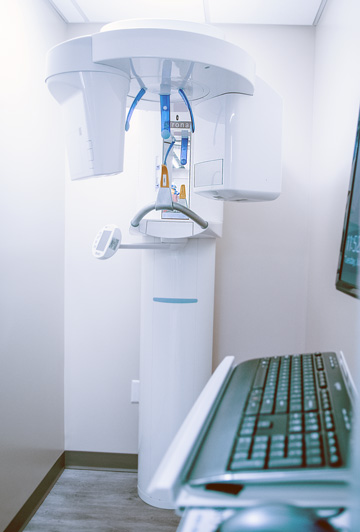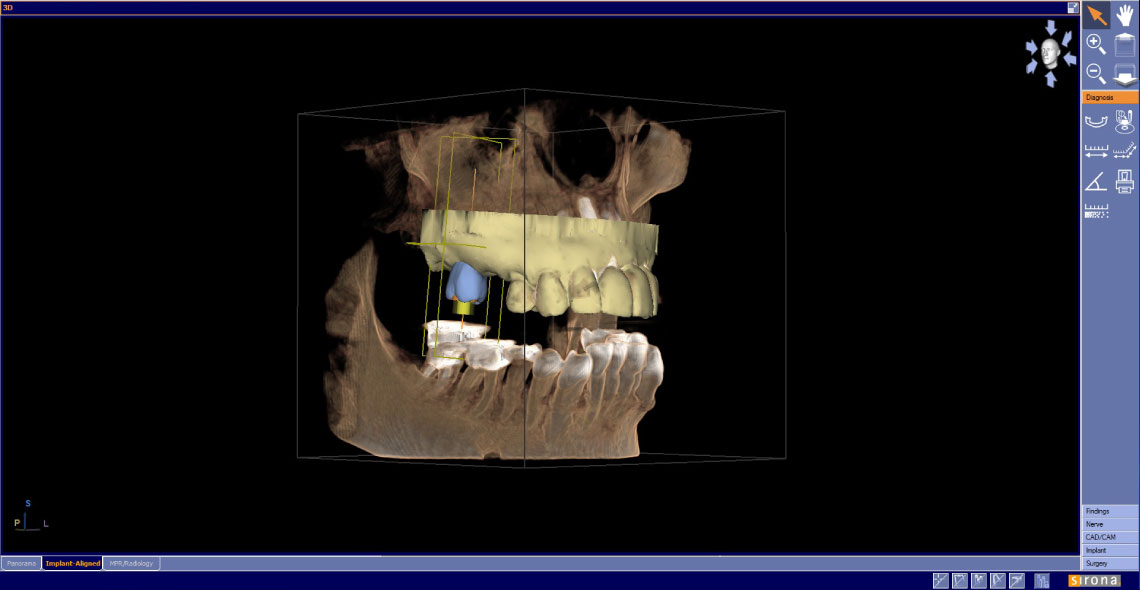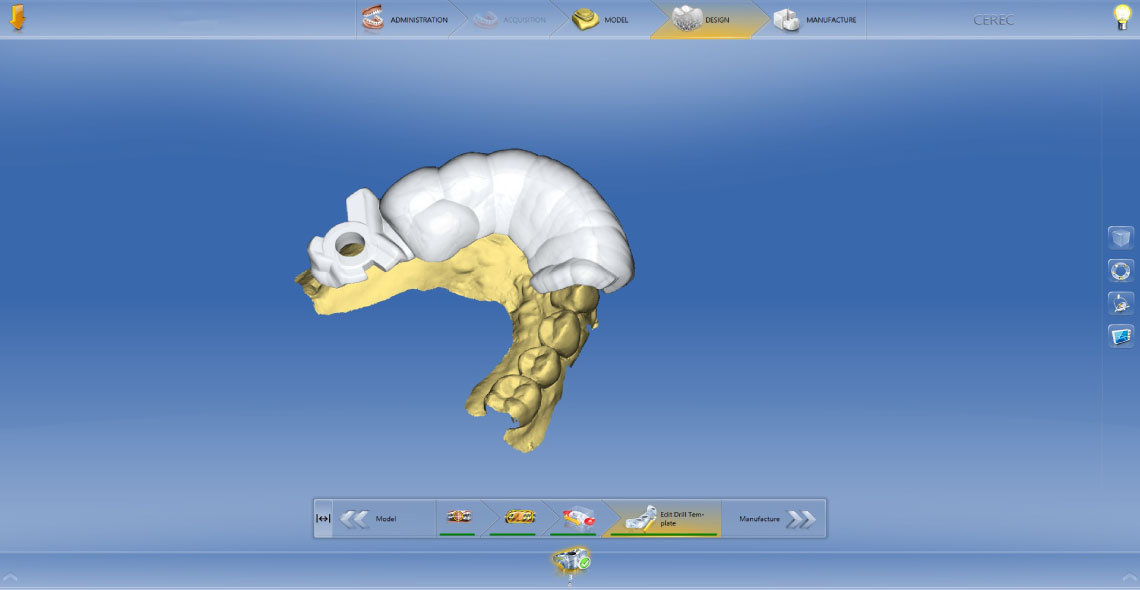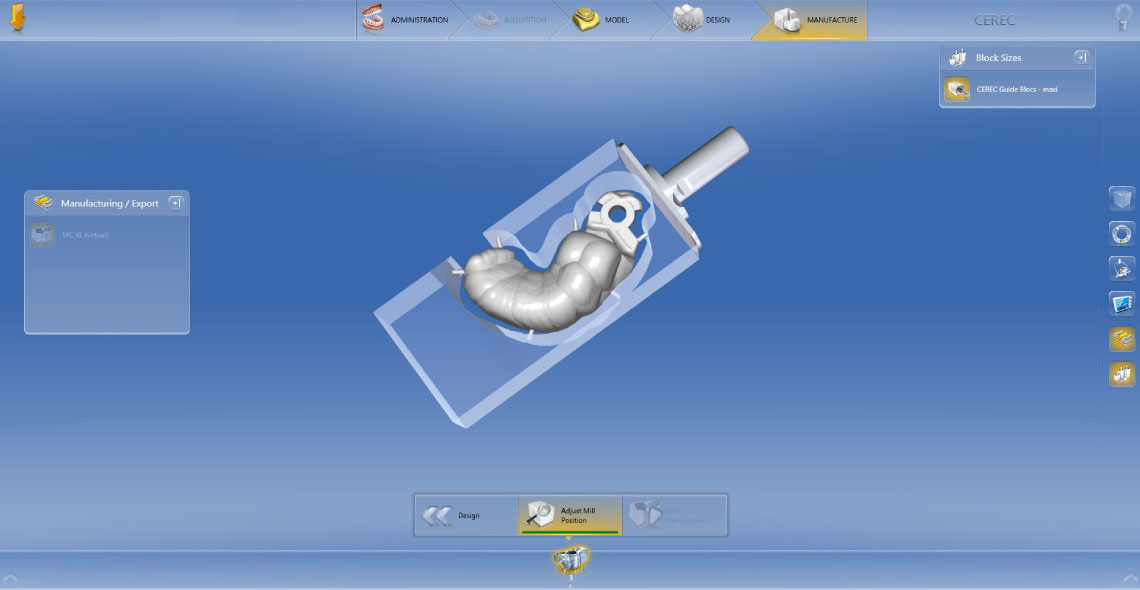Before development of dental implants, dentures and bridges were the only alternative to replacing a missing tooth or teeth.
Implants are synthetic structures that are placed in the area of the jaw normally occupied by the root. Implants are anchored to the jawbone and act as a foundation for an artificial tooth or permanent bridge. In some cases, implants can be used to attach dentures.
Implants are so well designed that they mimic the look and feel of natural teeth. They are usually made of a synthetic yet biocompatible material like metal or ceramic.
Not everyone is a candidate for a dental implant, however. For an implant to be successful, a candidate must have proper bone density and have a strong immune system. In all cases, dental implants require strict oral hygiene.
 Planning For The Implant Procedure
Planning For The Implant Procedure
Dr. Fernandez performs many computer-guided implant placement procedures here in our office. Planning for the implant placement involves a great deal of technology and several steps.
Dr. Fernandez will begin by taking a Computerized Tomography (CT) Scan in our office to obtain a 3D image of the patient’s jawbone, which he can show to the patient. Based on the findings from this 3D image, Dr. Fernandez may use bone grafting to prepare the jaw if necessary.
Dr. Fernandez will also take a 3D computer image of the patient’s jaw using CEREC technology (Chairside Economical Restoration of Esthetic Ceramics). He will merge the xray and computer 3D images of the teeth and gums. This will allow him to visualize the placement of the implant in three dimensions, eliminating the guesswork involved in determining which part of the jawbone offers the best site for implant placement. Dr. Fernandez will plan precisely where the implant will be placed.
This plan will be exported as another file to the CEREC machine where Dr. Fernandez will design a physical implant guide. Once this design is complete, the information is sent either to our 3D printer which prints the implant guide or to the milling chamber which mills the implant guide.
Implant Placement Procedure
During the implant placement procedure, Dr. Fernandez places the implant guide he designed over the surgical site and the implant is placed into the bone socket of the missing tooth precisely in the desired location as planned by Dr. Fernandez.
Healing Time
Following the implant placement, a period of time, generally 3 months, is required for the implant to take hold and for bone tissue to build up and anchor the device. This process is called osseointegration.
Dr. Fernandez will have the patient return to the office so he can check the patient’s healing. Once he has determined that the implant is integrated securely in the bone, the final restoration step can be completed.
Implant Restorations
Once the gum has healed and integration of the implant into the bone has taken place, the implant is ready for the attachment of a metal abutment which acts as an anchor for the restoration. Then implants can be restored into crowns, bridges, or implant-retained dentures. Dr. Fernandez uses the CEREC System to make most of these restorations in the office.
Implant Crowns - An implant crown is the restoration of an implant replacing a single tooth. An abutment is screwed onto the implant and connects the implant to the crown.
Implant-Supported Bridges – With more than one implant, multiple teeth can be restored using a bridge.
Implant-Retained Dentures – An implant-retained denture is removable but held in the mouth by attaching to implants. Implant-retained dentures prevent the shifting in the mouth of traditional dentures.
All-on-4® Full-Arch Dental Implant Bridges – Teeth in a day with all-on-4 fixed dental implant bridges are an excellent alternative to conventional dentures and a permanent solution to missing teeth.
Please see our Smile Gallery for images of implant restorations done in our office!





